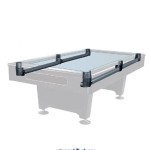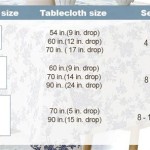Best Ping Pong Tables of 2024: A Comprehensive Guide
The pursuit of the perfect ping pong table involves navigating a market flooded with options, each promising superior performance and lasting durability. Identifying the best ping pong tables of 2024 requires a careful assessment of various factors, including build quality, playability, portability, and price. This article provides a detailed examination of key considerations and highlights some of the top-rated tables available this year, assisting buyers in making an informed decision.
Understanding the nuances of table tennis table construction is essential for selecting a model that meets individual needs and preferences. The table's surface, frame, and undercarriage contribute directly to its overall performance and longevity. This guide explores the features that differentiate top-tier tables from their less expensive counterparts, offering insights that will aid both recreational players and serious competitors.
Key Point 1: Evaluating Table Surface and Playability
The most crucial aspect of any ping pong table is the playing surface. The International Table Tennis Federation (ITTF) specifies that a regulation table must be 9 feet long, 5 feet wide, and 30 inches high. More importantly, the surface must be made of a material that provides a consistent and predictable ball bounce. This is commonly achieved using medium-density fiberboard (MDF) or similar engineered wood products.
The thickness of the tabletop is a primary indicator of its quality. Thicker tabletops, typically ranging from 1 inch (25mm) to ¾ inch (19mm) provide a more uniform bounce and are less susceptible to warping or sagging over time. Professional-grade tables consistently feature thicker surfaces to ensure optimal playability. Tables with thinner surfaces may be adequate for casual use but can exhibit uneven bounce and are more prone to damage.
The surface finish is also a critical factor. High-quality tables have a smooth, matte finish that minimizes glare and allows for consistent ball spin. The coating should be durable and resistant to scratches and dents. Some manufacturers employ special coatings designed to enhance ball grip and control. The consistency of the paint job is imperative; imperfections can alter the ball's trajectory and negatively impact gameplay.
When evaluating playability, consider the table's ability to maintain its flatness over time. Less expensive tables may warp due to humidity or temperature fluctuations, leading to an uneven playing surface. Tables with reinforced frames and sturdy support structures are less likely to experience this problem. The bounce height, as defined by ITTF standards, should be consistent across the entire playing surface.
Key Point 2: Assessing Frame and Construction Quality
The frame and undercarriage of a ping pong table provide structural support and stability. A robust frame prevents the tabletop from sagging and ensures that the table remains level during gameplay. Tables with heavy-duty steel frames and reinforced corners are generally more durable and resistant to damage.
The leg design is another important consideration. Legs should be sturdy and adjustable to compensate for uneven floors. Look for tables with thick steel legs and leveling feet that allow for precise adjustments. Some tables feature locking mechanisms to prevent the legs from collapsing during use. A well-designed leg system is crucial for ensuring a stable and safe playing environment.
The folding mechanism, if present, should be easy to use and reliable. Tables that fold for storage are convenient for smaller spaces, but the folding mechanism must be durable enough to withstand frequent use. Look for tables with smooth, secure folding mechanisms and locking latches to prevent accidental opening. The wheels, if any, should be sturdy and allow for easy maneuverability.
The quality of the hardware, such as screws, bolts, and hinges, also contributes to the table's overall durability. Stainless steel or other corrosion-resistant materials are preferred, as they are less likely to rust or corrode over time. Inspect the hardware for any signs of weakness or poor craftsmanship. A well-constructed table will have securely fastened hardware that is designed to withstand the rigors of regular use.
The edge banding, or apron, that surrounds the tabletop serves several purposes. It protects the edges of the tabletop from damage and helps to maintain its flatness. Look for tables with thick, durable edge banding that is securely attached to the tabletop. The edge banding should be smooth and free of any sharp edges or splinters.
Key Point 3: Distinguishing Indoor vs. Outdoor Tables
Ping pong tables are generally categorized as either indoor or outdoor models, each designed to withstand specific environmental conditions. Indoor tables are typically made of MDF, which is not water-resistant and can be damaged by moisture. Outdoor tables, on the other hand, are constructed from materials that are resistant to water, UV radiation, and temperature fluctuations.
Outdoor tables often feature aluminum or composite tabletops that are impervious to moisture and warping. These materials can withstand exposure to rain, snow, and sunlight without deteriorating. The frame and legs of outdoor tables are also typically made of weather-resistant materials, such as powder-coated steel or aluminum.
The surface finish of outdoor tables is designed to withstand UV radiation, which can cause fading and discoloration over time. Look for tables with UV-resistant coatings that will protect the surface from the harmful effects of the sun. The hardware used in outdoor tables is also typically made of stainless steel or other corrosion-resistant materials.
Indoor tables are generally lighter and more portable than outdoor tables. They are designed to be used in climate-controlled environments where temperature and humidity are stable. Outdoor tables, on the other hand, are heavier and more robust, designed to withstand the rigors of outdoor use. They often feature larger wheels and more durable folding mechanisms.
When choosing between an indoor and outdoor table, consider the intended use and the environment in which the table will be placed. If the table will be used primarily indoors, an indoor model is likely the best choice. If the table will be used outdoors, an outdoor model is essential to ensure long-lasting performance and durability.
Beyond these core considerations, buyers should also evaluate the table's safety features, such as corner protectors and locking mechanisms. Tables with integrated storage for paddles and balls can also be a convenient addition. Ultimately, selecting the best ping pong table of 2024 involves balancing these factors to find a model that aligns with individual needs and budget constraints.
Different brands have varying reputations regarding quality control and customer support. Researching customer reviews and seeking recommendations from experienced players can provide valuable insights into the reliability and performance of specific table models. Checking for warranties is also crucial; a comprehensive warranty can offer peace of mind and protection against manufacturing defects.
Consider the space available for both playing and storing the table. Before purchasing, measure the intended playing area to ensure that there is enough room for comfortable movement around the table. If space is limited, a folding table that can be easily stored when not in use may be the best option. Pay attention to the folded dimensions of the table to ensure that it will fit in the designated storage area.
The price range for ping pong tables varies widely, from a few hundred dollars for entry-level models to several thousand dollars for professional-grade tables. Setting a budget before beginning the search can help to narrow down the options and ensure that the chosen table is within financial reach. Be wary of excessively low prices, as they may indicate compromises in quality and durability.
The availability of replacement parts is another factor to consider. In the event that a component of the table breaks or wears out, it is important to be able to obtain replacement parts easily. Choose a table from a reputable manufacturer that offers replacement parts and has a reliable customer support network. This will help to ensure that the table can be repaired and maintained over its lifespan.
Finally, consider the aesthetic appeal of the table. While performance is paramount, the table's appearance can also contribute to the overall enjoyment of the game. Choose a table with a design and color scheme that complements the surrounding environment. Many manufacturers offer tables in a variety of styles and finishes to suit different tastes.
Through careful evaluation of these factors, individuals can confidently select a ping pong table that provides years of enjoyment and enhances their table tennis experience. The best ping pong table in 2024 will ultimately be the one that best meets the specific needs and preferences of the user, offering a balance of performance, durability, and value.

Top 5 Best Ping Pong Tables In 2024

10 Best Ping Pong Tables Of 2024

Best Ping Pong Tables 2024 Forbes Vetted

Top 5 Ping Pong Tables Of 2024 Best Buyer S Guide

Best Ping Pong Tables 2024 Forbes Vetted

7 Best Ping Pong Tables Tested And Reviewed By Gear Experts

Best Ping Pong Tables 2024 Forbes Vetted

Guide To The Best Ping Pong Tables 2024 Ponghero

Stiga Optimum 30 Table Tennis With 30mm Thick Top And Unmatched Stability Us

Best Joola Ping Pong Table Guide
Related Posts








